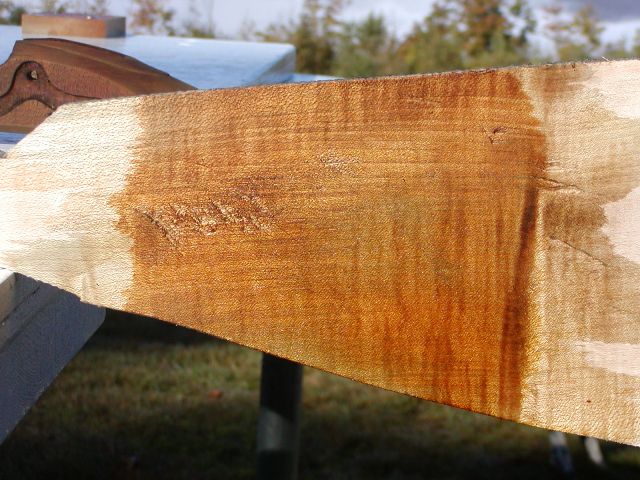Your ferric nitrate seems very weak compared to what I've seen in my testing and use. Did you wipe it down before heating it? Or was it just very thin?Here's the results i got a few minutes ago on the area under the butt plate of a CVA kit with beechwood.
First the before pic.
View attachment 183523
This one with vinegaroon
View attachment 183524
And this one with ferric nitrate applied over the lower part of the butt. And with heat applied.
View attachment 183525
And here's the vinegaroon applied to curly maple. It got even blacker a few minutes after this pic was taken.
View attachment 183526
And curly maple with the ferric nitrate.
View attachment 183527
So, IMO, I don't think you will get anywhere near where you want to be with either on your beechwood. Conventional stains might be the best approach.
The solution I made is a light brown color








